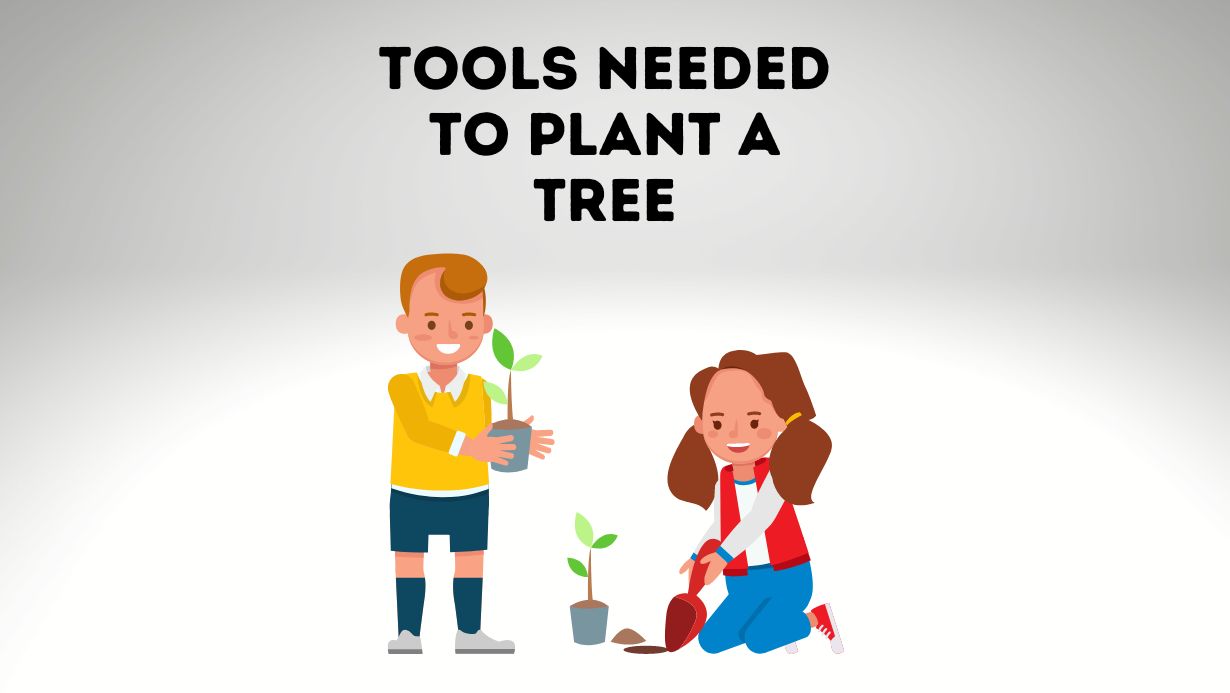
Are you getting ready to plant a tree but have no idea what tools you need? Well, don’t worry. In this article, I will list all the tools and equipment you need to plant a tree successfully.

This list of tools and equipment will cover everyone. I’ll provide options for the at-home gardener or the career planter. Either way, planting a tree will be much easier when you have the right tools.
I run my city’s street tree program, where we plant thousands of trees a year. My team has trialled many different tools and ways of doing things. The following list is the culmination of years of trial and error.
ALWAYS… Use the right tool, for the right job, in the right way
The Tools and Equipment Needed to Plant a Tree
Everything Arboriculture is supported by its readers. When you buy through links on this site, we may earn an affiliate commission.

General Safety Wear: Gloves and Steel-Toed Boots
At a minimum, I recommend wearing steel-toed boots. When planting a tree, you will be:
- Digging
- Crowbarring
- Using heavy equipment
Wearing steel-toed boots will protect you from all these things if an accident were to happen.
Gloves are nice to have but not essential. Gloves will protect you from blisters and splinters.
When I last planted a tree without gloves, my hands were left bleeding. I had to use a crowbar which gave me nasty callouses. Not good.
Shovel
A shovel is the most crucial tool for planting a tree. You will need a shovel to dig the hole for the tree. After the tree is in the hole, you will need to fill it with dirt.
Here are my two recommended features for a shovel:
- Fibreglass handle
- Foam hand grips
I find fibreglass shovels are smoother and lighter. Plus, foam grips make the shovel easier to hold and much more comfortable.
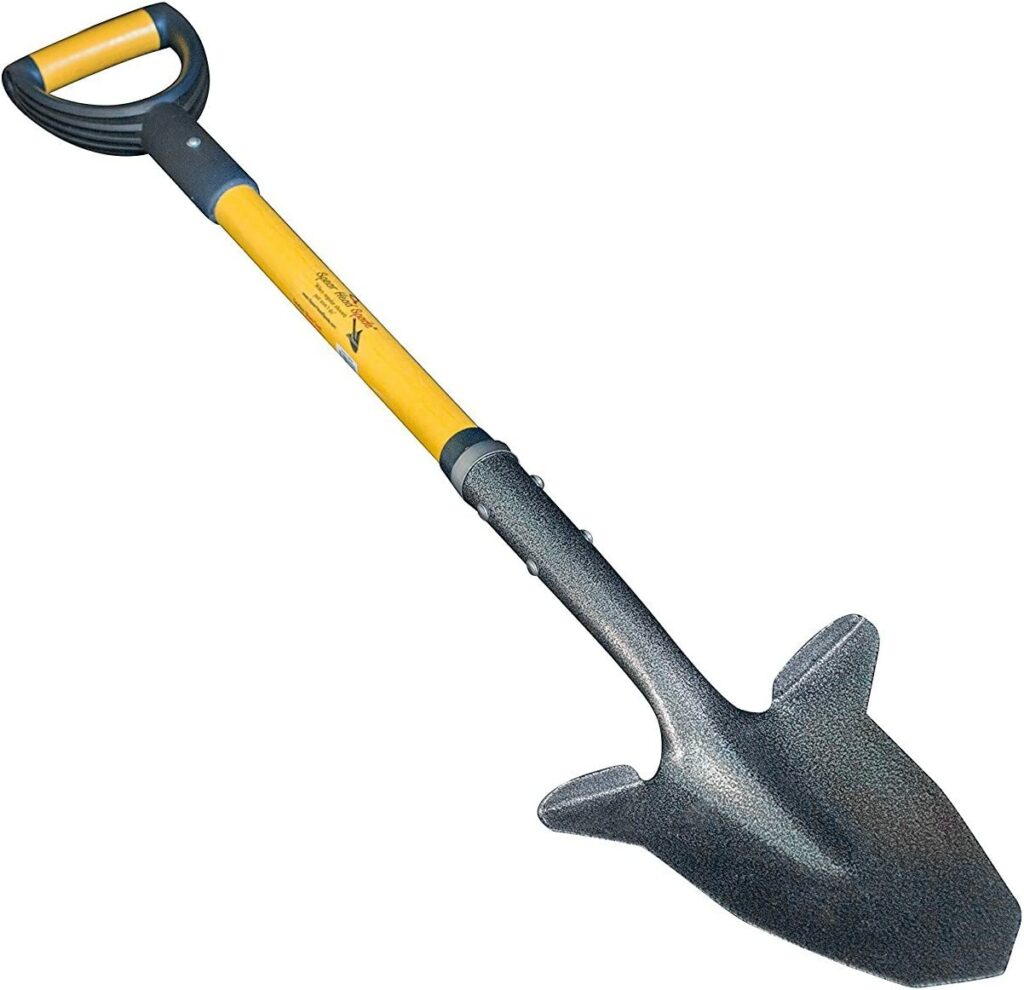
Crowbar
A crowbar is an optional tool that can help when digging holes. There are times when the dirt is too tough, and a shovel won’t get through. During these times, a crowbar can be a lifesaver.
A crowbar will help break up tough dirt. By alternating between a shovel and a crowbar, you should be able to dig through most densities of soil.
I recommend buying a long crowbar that allows you to get lots of leverage.
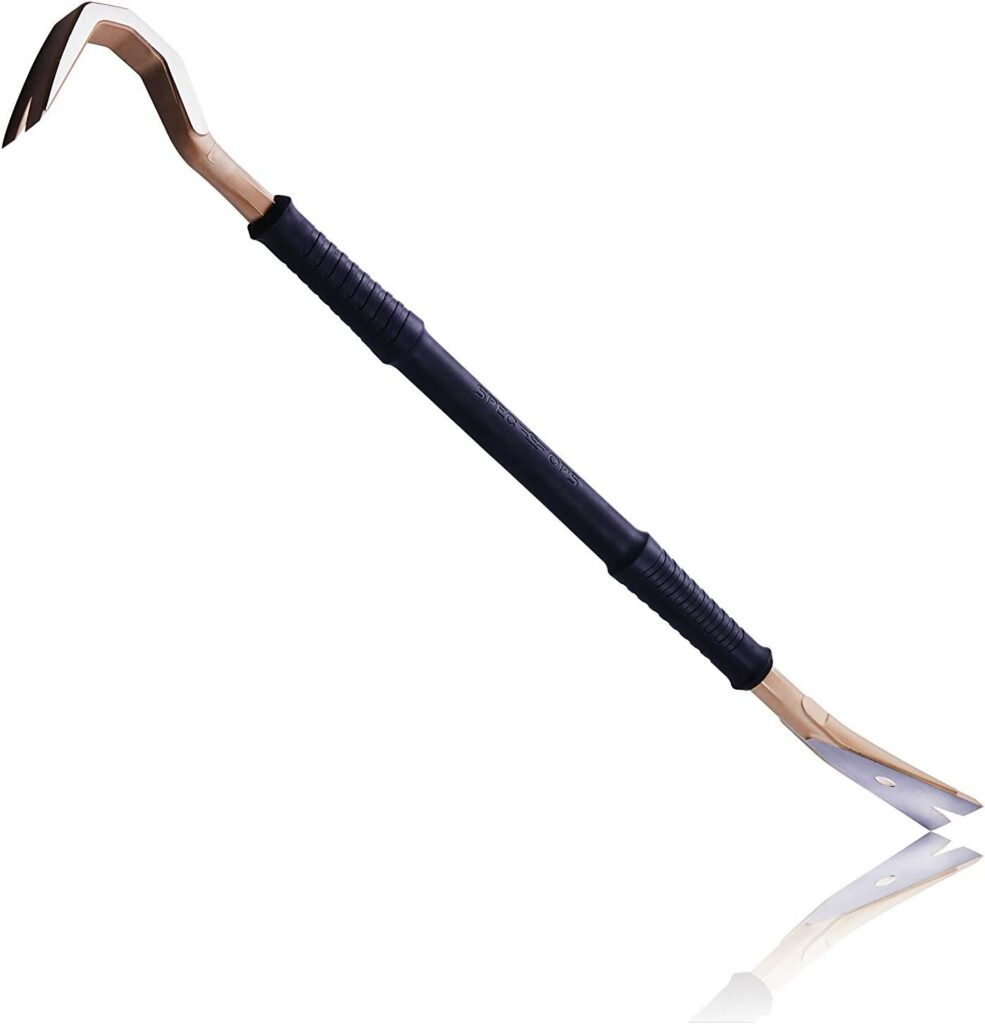
Tub
When digging a hole, you will need to put the dirt somewhere. A tub is an excellent option for storing dirt. Using a tub will keep your work area clean and tidy.
Using a tub for storing dirt is optional. Instead, you can keep the soil on the ground next to your hole. It means your worksite might be a little messier, and it can be harder to shovel dirt back into the hole.
Any tub will do. Below is a picture of the one my team uses.
Water Well
A water well is a plastic ring around the tree’s base. By installing water wells, you can water your trees much easier. The bowl will hold the water in a concentrated spot. So, a water bowl will allow the tree to receive much more water.
Without the well, the water will run off away from the tree. You will need more water to get the same effect as water wells.
Water wells come in different sizes. The different sizes will determine how much water the well can hold. Generally, bigger wells are better.
My team has tried a range of water wells over the year. The best water well is the 52L.
We only need to water new trees once a week with this size well. Smaller wells required us to water the trees twice a week. Two glasses of water a week took too long, and many trees didn’t receive enough attention.
New trees in my city that had 52L water will thrive. These trees establish well and grow much faster than average.
If you’re looking for a water well, here is one from Stark Bro’s (no affiliation). I recommend their 24″ well.
AG Pipe
An AG pipe is a flexible drainage pipe. By putting two pieces of pipe in the water well, water can drain deeper into the soil.
We get large rolls of piping and cut it up into smaller pieces. We then put two pieces in the well on either side of the tree.
It’s a small addition, but our trees do much better with the pipe.

Wooden Stakes
Wooden stakes will allow you to support your new tree. A stake on either side of the tree will give you the ability to attach supporting ties around your tree. You will need to install the stakes on either side of the tree, outside the root zone.
Stakes vary in size and material. I stick to thin wooden stakes purely for budget purposes. I would get my team to use thicker stakes if I had the budget.
So, I recommend getting thick stakes. These stakes are sturdy and recyclable.
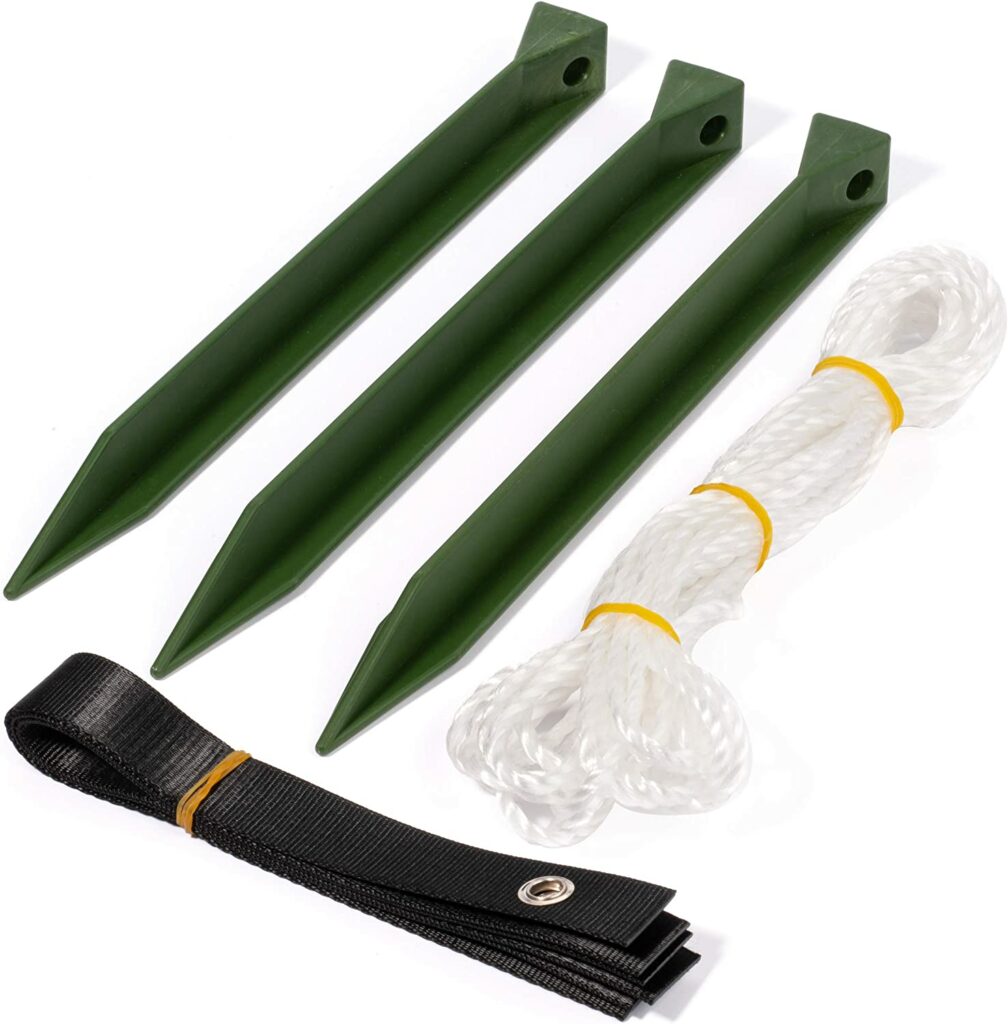
Knocker or Mallet
A knocker or mallet can help install the wooden stakes. Essentially, you need something heavy to peg the stakes into the ground.
A mallet is fine for the average gardener who doesn’t plant too many trees. A mallet is cheaper but will need to work harder.
I would suggest a bigger knocker for those of you who do lots of planting. Though a knocker is heavier, you can drive more power into your swings. More power allows you to knock the stakes in quicker.
If you have the money, a motorized knocker is even better.
If you’re not sure what a knocker looks like, check out the photo below.
For knockers, I recommend the Heavy Duty Steel Post Driver by Prolinemax (affiliate link).
The Prolinemax handles and overall weight make this knocker comfortable to use. It weighs approximately 25 lbs, so you will get a workout using this knocker.
Light knockers make it hard to drive stubborn posts into the ground. So, I recommend opting for heavier knockers.

Hessian Strap and Staple Gun
The hessian strap is what will support the tree. Hessian strapping is a breathable material that allows tree room to grow.
When installing the strap, be sure to tie the tree at the lower third of the trunk. Also, don’t tie the tree too tight; you want the tree to move in the wind.
You will need a staple gun to staple the strap down. You can use an electric or manual staple gun. Again, I suggest purchasing based on projected use.
An electric stapler is more expensive, but it will be much easier on your hand and wrist.
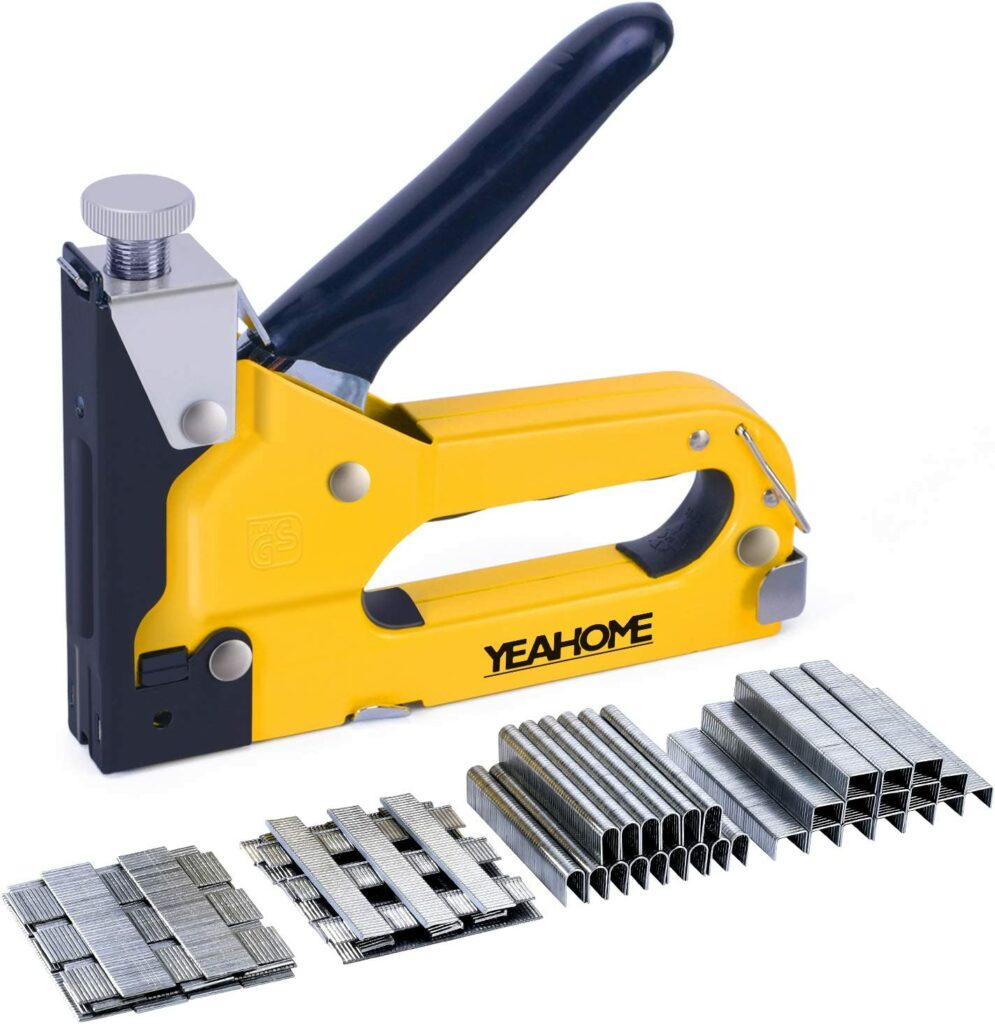
Secateurs
Secateurs have two uses when it comes to tree planting:
- Cutting off the tie after stapling
- Pruning away any rubbing or crossing branches
Cutting off the tie after stapling
Once you staple the strap to the stake, you will need to cut the strap. Use can use secateurs to do this. Alternatively, a Stanley knife will do.
Pruning away any rubbing or crossing branches
Crossing or rubbing branches at the time of planting can be an issue. It’s best to prune these branches immediately.
However, you shouldn’t give the new tree a complete formative prune.
Leaves are essential for photosynthesis. Photosynthesis will allow the tree to grow and heal.
Planting is stressful for the tree; we want the tree to photosynthesize as much as possible. Pruning leaves away will hinder this process.
My recommendation for secateurs is the classic FELCO Manual Hand Pruners (affiliate link).

These pruners are heavy-duty and reliable. My team have been using these pruners for years without any issues. I rarely have to replace them.
With all these different tools and pieces of equipment, you should have no problem planting a tree. Just make sure you pick the right species to plant: Choosing the Right Tree to Plant: An Extensive Guide
Once you’re ready to plant your tree, check out this guide: How to Plant a Tree: What You Need to Know to Get It Right. This guide is a culmination of my years of tree planting.
